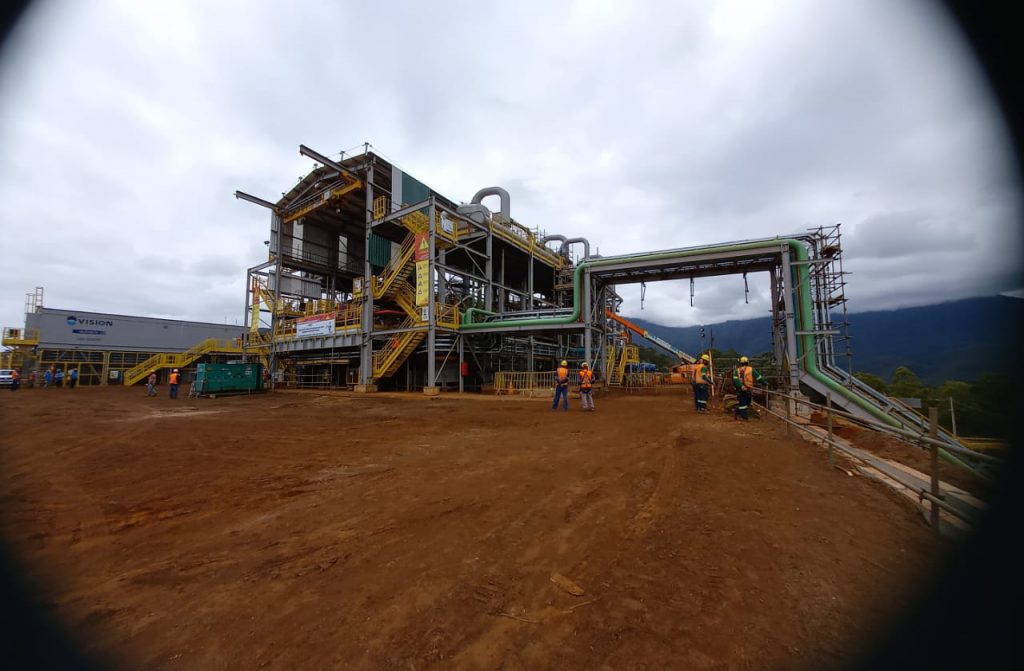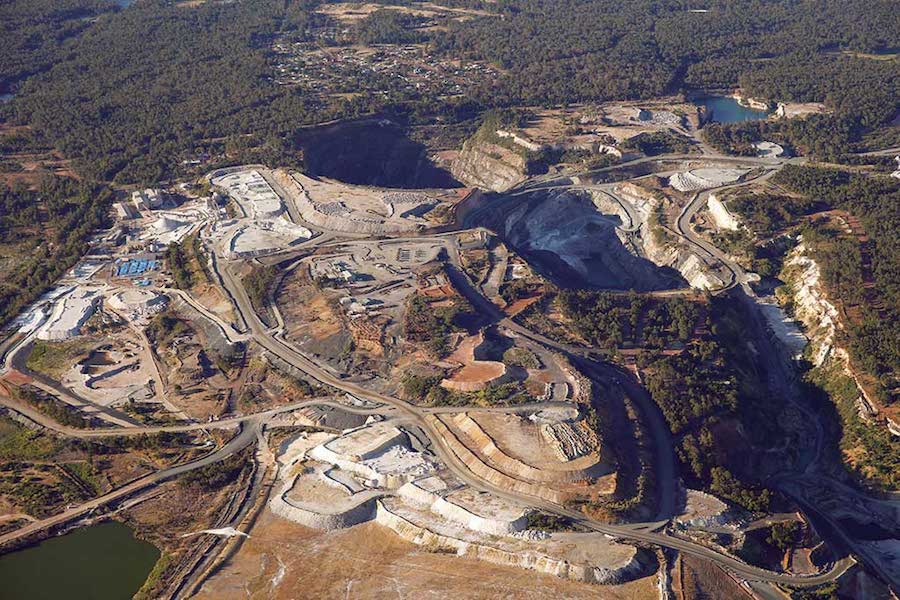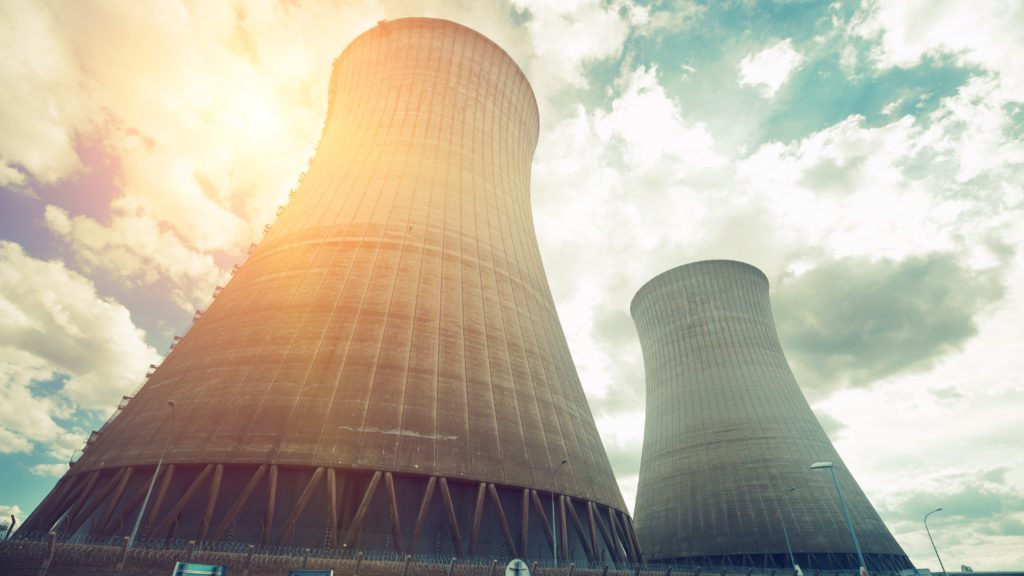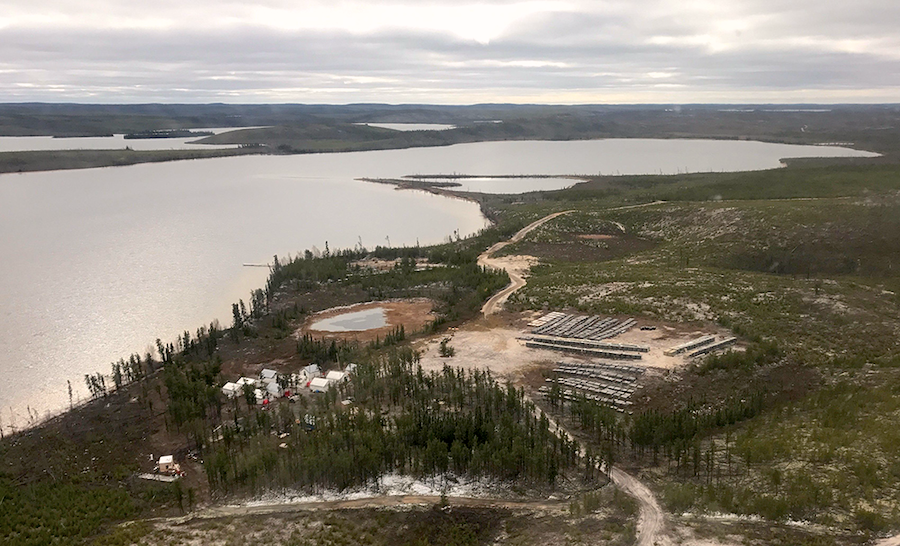UK
EDF revises Hinkley Point C schedule and costs
20 May 2022
The start of electricity generation for unit 1 of the Hinkley Point C plant in the UK is now expected in June 2027 and the project completion costs are now estimated in the range of GBP25 to 26 billion (in 2015 prices), EDF has announced following a review.
.jpg?ext=.jpg) The Hinkley Point C construction site, pictured in November 2021 (Image: EDF Energy)
The Hinkley Point C construction site, pictured in November 2021 (Image: EDF Energy)In January 2021, EDF said the start of electricity generation from unit 1 had been rescheduled to June 2026, compared with end-2025 as initially announced in 2016. Delays arising from the COVID-19 pandemic would also increase the cost of the project by GBP500 million (USD624 million) to between GBP22 and 23 billion.
EDF said it has now completed a review that took into account the main aspects of the project to build the two 1630 MWe EPR reactors, but did not include a review of the schedule and cost of electromechanical works and of final testing.
The company has announced a further one-year delay to the start-up of unit 1, with "the risk of further delay of the two units assessed at 15 months, assuming the absence of a new pandemic wave and no additional effects of the war in Ukraine." It noted that since the start of construction in December 2018, the project has been delayed by 18 months in total, mainly due to the COVID-19 pandemic.
EDF also announced a GBP3 billion rise in the cost of the overall project. However, it noted that under the terms of the project's Contract for Difference with the British government, there is no impact for UK consumers.
"During more than two years of the COVID-19 pandemic, the project continued without stopping. This protected the integrity of the supply chain and allowed the completion of major milestones," EDF said. "However, people, resources and supply chain have been severely constrained and their efficiency has been restricted. In addition, the quantities of materials and engineering as well as the cost of such activities, including, in particular marine works have risen."
EDF said the next major milestone at the Hinkley Point C project will be the lifting of the containment dome on unit 1, expected during the second quarter of 2023.
NDA, Cwmni Egino to collaborate on Trawsfynydd development
20 May 2022
The UK's Nuclear Decommissioning Authority (NDA) and Welsh development company Cwmni Egino have announced they will work together on proposals for the siting of a new nuclear development at the Trawsfynydd site in north Wales.
.jpg?ext=.jpg) The existing Trawsfynydd plant site (Image: Magnox Ltd)
The existing Trawsfynydd plant site (Image: Magnox Ltd)
Cwmni Egino, wholly-owned by Welsh Government, was established in 2020 to bring forward potential new projects, including the deployment of small nuclear reactors (SMRs), to generate electricity and wider options to maximise the opportunity for the Trawsfynydd site.
The 392 MWe Trawsfynydd Magnox nuclear power plant began operation in 1965 and was retired in 1991. It is now owned by the NDA and is being decommissioned by NDA subsidiary Magnox Ltd. The NDA also owns land outside the Magnox site boundary which could be used for a new nuclear development.
"As part of this new arrangement, the NDA will share information about the characteristics of the available land at the Trawsfynydd site, its decommissioning plans (to support schedule and work-force planning) and support Cwmni Egino in the development of its socio-economic plans," the companies said in a joint statement. "It will also offer an opportunity for Cwmni Egino to engage with potential developers and technology providers who wish to participate in the development of the Trawsfynydd site."
They noted any formal commitment of NDA land, or other support, would require government approval via NDA's sponsoring department, the Department for Business, Energy and Industrial Strategy.
"As well as delivering our mission, we're committed to helping the government in supporting its energy goals and our partnership with Cwmni Egino, around the potential future use of land at Trawsfynydd, is testament to our continued support of government policy and our socio-economic obligations," said NDA CEO David Peattie.
Cwmni Egino CEO Alan Raymant added: "Our relationship with NDA and Magnox is critical to the successful delivery of our vision for the development of new nuclear at Trawsfynydd. This collaboration agreement provides the foundation for a fruitful partnership that will bring benefits to the local community and help deliver the Energy Security Strategy."
Cwmni Egino is progressing its plans for a development at Trawsfynydd and hopes to be in a position to confirm their outline business proposition within the year.
Rolls-Royce has identified the Trawsfynydd site to build one of the first of a new fleet of SMRs across the UK.
Rolls-Royce SMR CEO Tom Samson welcomed the collaboration between NDA and Cwmni Egino, saying: "Identifying sites is a key milestone for us and this location offers existing grid connection, infrastructure, access to a highly skilled workforce and strong relationships with a supportive engaged community. The land around the Magnox site at Trawsfynydd has great potential for small modular reactors.
"Cwmni Egino has the right leadership to move the project forward at pace, and that's matched by the Nuclear Decommissioning Authority's commitment to delivering its mission in a way that promotes regional economic and social regeneration."
Researched and written by World Nuclear News









.jpg?ext=.jpg) How the VTR could look (Image: INL)
How the VTR could look (Image: INL).jpg?ext=.jpg) PSFC's vision of SPARC (Image: PSFC)
PSFC's vision of SPARC (Image: PSFC).jpg?ext=.jpg) A rendering of a spacecraft powered by Ultra Safe Nuclear's EmberCore (Image: USNC)
A rendering of a spacecraft powered by Ultra Safe Nuclear's EmberCore (Image: USNC).jpg?ext=.jpg) Westinghouse's vision for eVinci (Image: Westinghouse)
Westinghouse's vision for eVinci (Image: Westinghouse).jpg?ext=.jpg) The Hinkley Point C construction site, pictured in November 2021 (Image: EDF Energy)
The Hinkley Point C construction site, pictured in November 2021 (Image: EDF Energy).jpg?ext=.jpg) The existing Trawsfynydd plant site (Image: Magnox Ltd)
The existing Trawsfynydd plant site (Image: Magnox Ltd)

